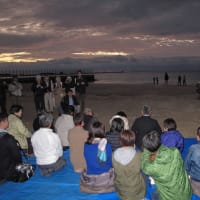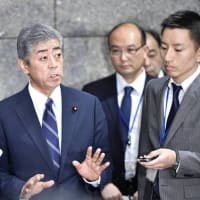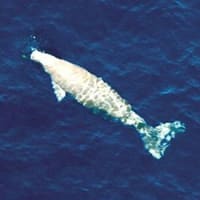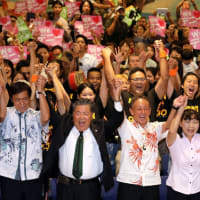
The Henoko sea of Nago City, Okinawa is an important habitat for dugongs. Yet, land reclamation is planned on this very ocean to construct a U.S. military base. To educate people outside of Okinawa about this beautiful ocean and the threats it faces, every year the Save the Dugongs Campaign Center plans a “Jugon(Dugong) no Sato Tour”. This study tour’s main purposes are to learn the current situation of Okinawa, interact with local people, and experience the nature of the Yambaru region.
This year’s tour, which was the 10th to be organized, was held over three days、July 3-5. On day one, participants visited the Futenma and Kadena bases, and later the Nago City Hall to learn more about bases and the measures taken by the city. Day two started with a trip to the Henoko Tent Village and a canoeing experience in the surrounding sea, followed by participation in anti-base demonstrations in front of the Camp Schwab gate. The final day consisted of a two-routed walk along the Eastern coast of Nago City.
*Jugon(Dugong) no Sato : hub for conservation dugongs on the east coast of Nago City
- Day one -

Visit to the Nago City Hall

- Day two -

4094th day at the Tent Village sit-in protests. Camp Schwab Gate has reached its 363rd sit-in day.
The situation continues to be tense.

Henoko beach
Message banners and ribbons were tied to the fence.

We paddled out into the beautiful Ooura-gulf on canoes from Sedake-beach.
Floats set up around planned construction areas were observed as well.

Participation in a peace candle event at Camp Schwab.
Many car drivers waved back at us ☆
- Day three -

Day 3, route one: Visiting traces of refugee camps used during the Battle of Okinawa in Yambaru
This year marks 70 years after the end of WWII. We decided to think about bases and peace in Yambaru, which suffered greatly during the Battle of Okinawa. Only 70 years ago, this place was a battlefield, and we strongly felt that this cannot happen again.
Ms. Etsuko Urashima explaining at the site, where Sedake lighthouse once stood.

Day 3, route two: Leaning about the life and religious beliefs in the Yambaru region from a local guide
Our guide, Mr. Ooshiro, showed us around shrines, burial grounds, and castle ruins. We were also able to hear about the concentration camps of the region during and after the war. The chief of Sedake Ward joined us on the walk as well, and we felt their strong compassion towards the community.




















